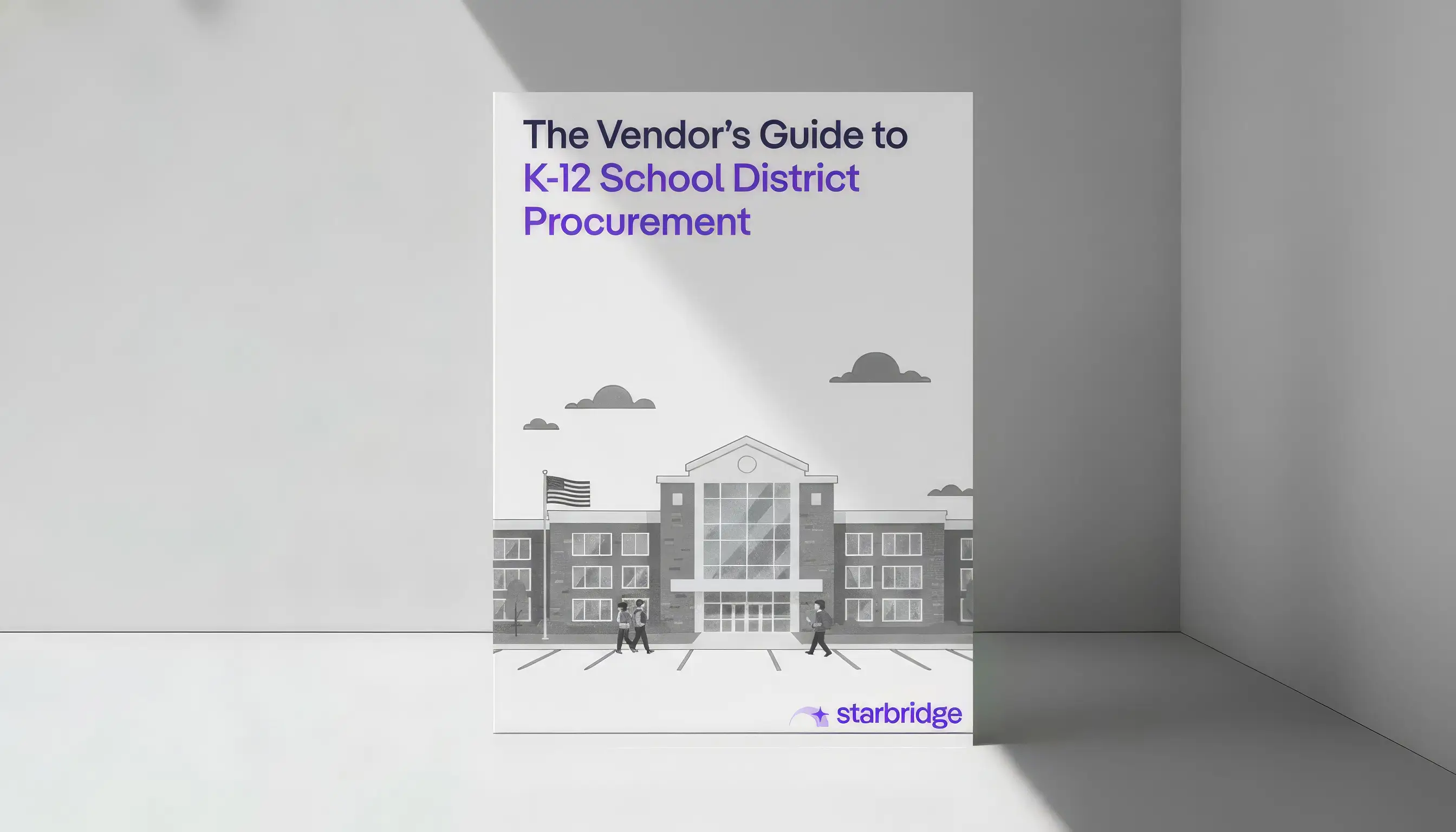
Market Report
August 2, 2025
The Vendor's Guide to K-12 School District Procurement
See where your top accounts land - and how to navigate their procurement processes with resellers, co-ops, and contract shortcuts.
Every month, Starbridge processes millions of public documents - RFPs, contracts, board minutes, procurement policies, and more - to help vendors identify the fastest path to public sector revenue.
Executive Summary
K–12 procurement is messy, inconsistent, and often opaque.
To make it easier for vendors to navigate, we analyzed procurement data across the 2,000 largest U.S. school districts. We looked at sole source thresholds, cooperative purchasing agreements, reseller relationships, and historical contract behavior to score how difficult it is to sell into each district.
The result: a nationwide Procurement Hell Index that shows where friction is highest - and how to work around it.
Top Trends
- Over 70% of large districts use at least one cooperative or reseller contract to simplify purchasing, if you know which ones apply.
- Sole source thresholds range widely, from $2,000 to $50,000+, drastically changing how you approach deals.
- Contracting behavior is inconsistent. Some districts rely heavily on piggybacking, while others default to formal RFPs for nearly every purchase.
What You'll Learn
- Which districts are the easiest, or most painful, to sell into
- What procurement shortcuts exist (and how to find them)
- How to adapt your GTM strategy to local procurement constraints
Explore Our Use Case Library
Ready to book
more pipeline?
See your top accounts that are ready-to-buy today
.svg)

.png)
.png)
.png)